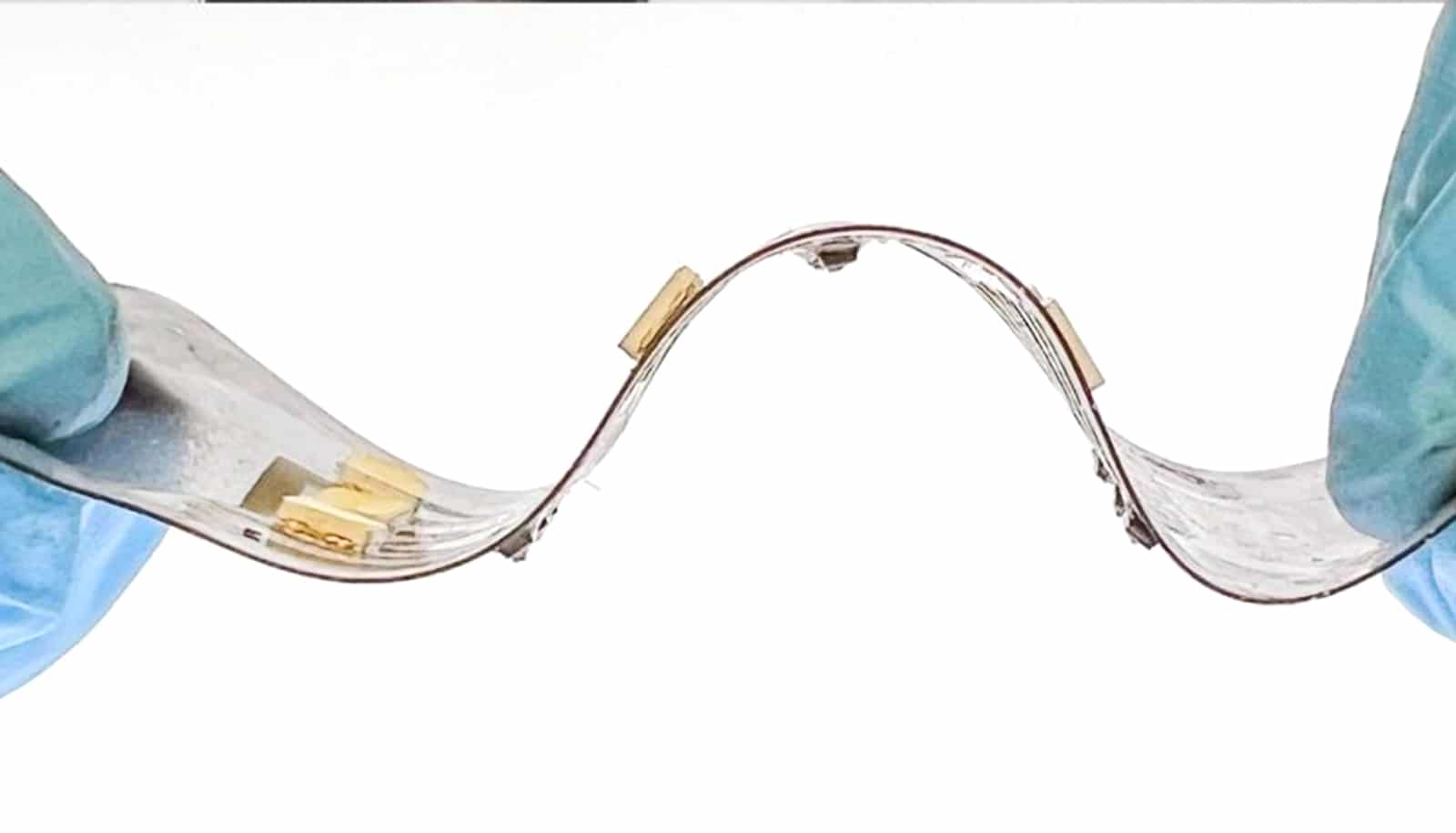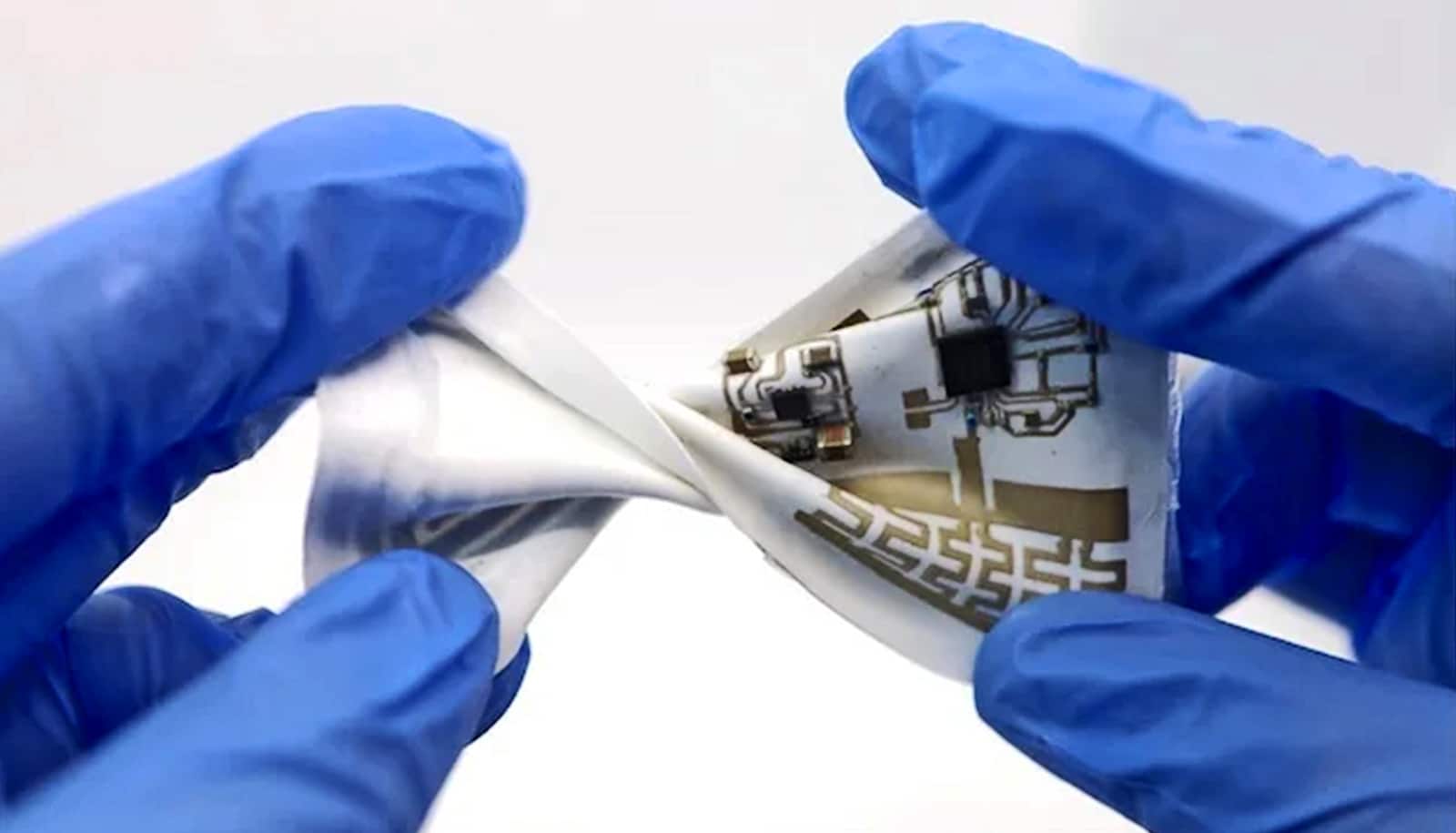A new method for creating soft, flexible electric connections across and through circuit layers may pave the way for advanced soft robotics, wearable devices, and more.
If a phone or other electronic device was made of soft materials, how would that change its use? Would it be more durable? If hospital health monitoring equipment was made of less rigid components, would it make it easier for patients to wear?
While electronics of that type may still be far in the future, researchers have developed an innovative method for constructing the soft electronic components that make them up.
The focus of a project from the team of Michael Bartlett, principal investigator and associate professor in the mechanical engineering department at Virginia Tech, is on the circuits that manage all the electronic connections inside.
Published in Nature Electronics, this novel technique uses liquid metal microdroplets to create a stair-like structure that forms small conductive passages called vias. These vias create electric connections through and across circuit layers without needing drilled holes in hardware, as previous techniques have.
“This brings us closer to exciting possibilities like advanced soft robotics, wearable devices, and electronics that can stretch, bend, and twist while maintaining high functionality,” Bartlett says.
Previous soft circuit research developed by Bartlett’s team replaces inflexible materials with soft electronic composites and tiny, electricity-conducting liquid metal droplets. These soft electronics are part of a rapidly emerging field of technology that give gadgets a new level of durability.
In this project, researchers took on the problem of soft circuit boards, particularly the passing of electrical currents between the layers that stack on top of one another. This is important to make good use of electrical current in the tight space circuit boards occupy.
Whereas conventional rigid electronics utilize well-established techniques for creating vias, which are essential to make the multilayer electronics that are common today, they often require holes be drilled through a circuit board, which works when rigid materials are used to connect those layers. In a flexible material where a punched hole might stretch open, controlling that current requires a different approach.
The team’s new technique makes no holes and uses liquid metal microdroplets to form soft vias and planar interconnects, creating electrical connections through and across circuit layers, overcoming these challenges. The process involves the directed stratification of liquid metal droplets within a photoresin. By leveraging irregularities that arise during ultraviolet exposure, the researchers create a stair-like structure that allows the droplets to controllably assemble in 3D.
This approach is highly versatile, and these liquid metal vias and interconnects can be implemented in several types of materials. They can go further and perform the fabrication approach multiple times and create more and more layers.
In known methods of creating electronics and other micro- and nanotechnologies, during ultraviolet exposure, imperfections known as mask-edge abnormalities, or undercutting, typically present challenges in standard manufacturing. However, the researchers have turned this bug into a feature: the edges of the ultraviolet-exposed regions cause the liquid metal droplets to settle and stratify in a stair-like, vertical pattern.
This directed assembly allows the droplets to form a continuous pathway through the photoresin, connecting the top and bottom layers, which is then fully cured to lock the configuration in place. This process occurs simultaneously, and settlement of the droplets is quick, so that the process to make multiple vias takes less than a minute.
“By leveraging these otherwise unwanted edge effects, we can create soft, conductive vias that connect different circuit layers in a rapid and parallel fashion,” says first author Dong Hae Ho, a postdoctoral researcher working with Bartlett.
“We can do this all while maintaining flexibility and mechanical integrity of the soft device.”
“By integrating with both in-plane and thru-plane circuit layers, it’s possible to create soft, flexible circuits with complex, multilayered architectures,” Bartlett says.
“This enables new forms of soft electronics, where multiple soft vias and interconnects are created in a parallel and spatially controlled manner. This is crucial for advancing the field.”
Additional researchers from the University of Pennsylvania contributed to the work.
Support for this research came from Bartlett’s Office of Naval Research Young Investigator Program award and National Science Foundation Early Faculty Career Development (CAREER) award, as well as from Virginia Tech.
Source: Virginia Tech



